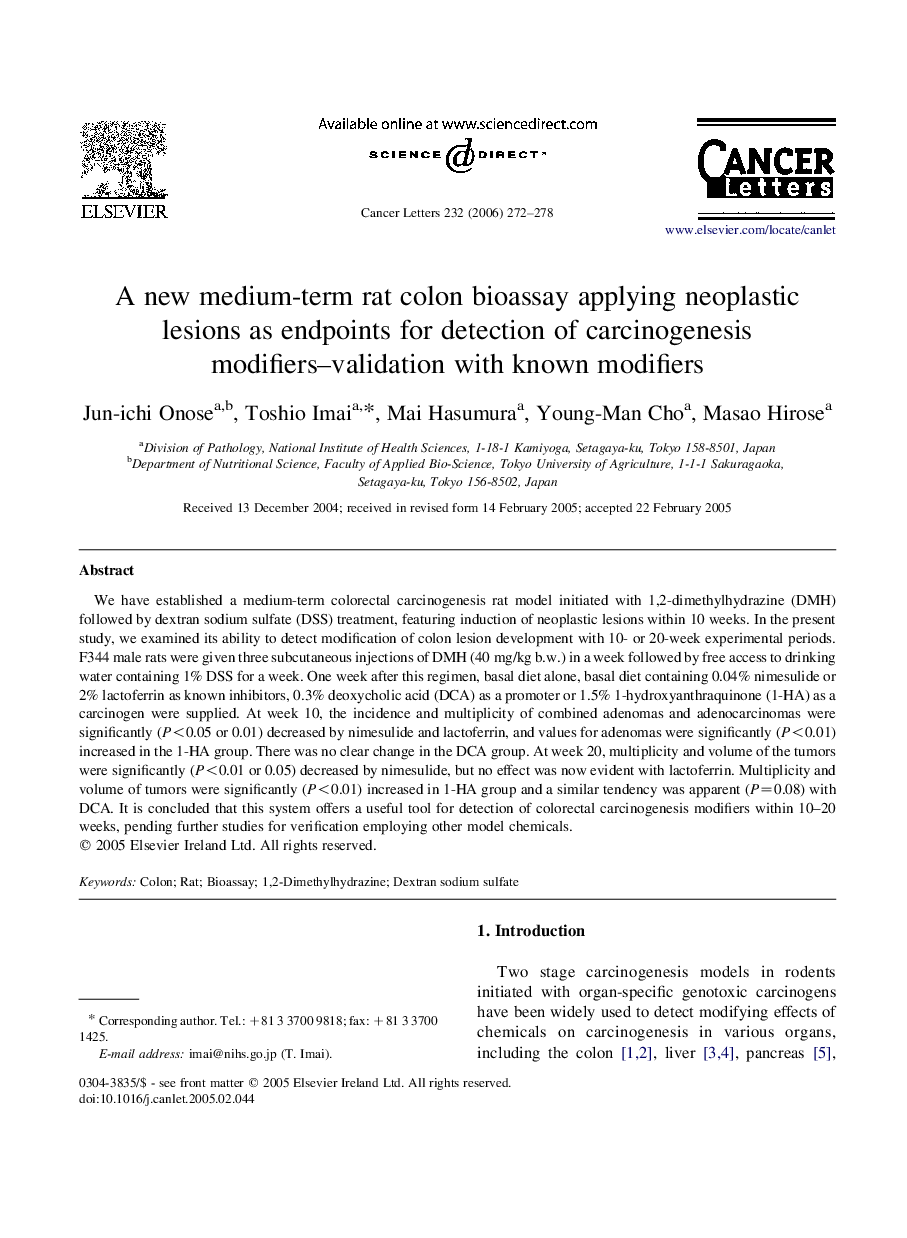| Article ID | Journal | Published Year | Pages | File Type |
|---|---|---|---|---|
| 2116040 | Cancer Letters | 2006 | 7 Pages |
We have established a medium-term colorectal carcinogenesis rat model initiated with 1,2-dimethylhydrazine (DMH) followed by dextran sodium sulfate (DSS) treatment, featuring induction of neoplastic lesions within 10 weeks. In the present study, we examined its ability to detect modification of colon lesion development with 10- or 20-week experimental periods. F344 male rats were given three subcutaneous injections of DMH (40 mg/kg b.w.) in a week followed by free access to drinking water containing 1% DSS for a week. One week after this regimen, basal diet alone, basal diet containing 0.04% nimesulide or 2% lactoferrin as known inhibitors, 0.3% deoxycholic acid (DCA) as a promoter or 1.5% 1-hydroxyanthraquinone (1-HA) as a carcinogen were supplied. At week 10, the incidence and multiplicity of combined adenomas and adenocarcinomas were significantly (P<0.05 or 0.01) decreased by nimesulide and lactoferrin, and values for adenomas were significantly (P<0.01) increased in the 1-HA group. There was no clear change in the DCA group. At week 20, multiplicity and volume of the tumors were significantly (P<0.01 or 0.05) decreased by nimesulide, but no effect was now evident with lactoferrin. Multiplicity and volume of tumors were significantly (P<0.01) increased in 1-HA group and a similar tendency was apparent (P=0.08) with DCA. It is concluded that this system offers a useful tool for detection of colorectal carcinogenesis modifiers within 10–20 weeks, pending further studies for verification employing other model chemicals.
